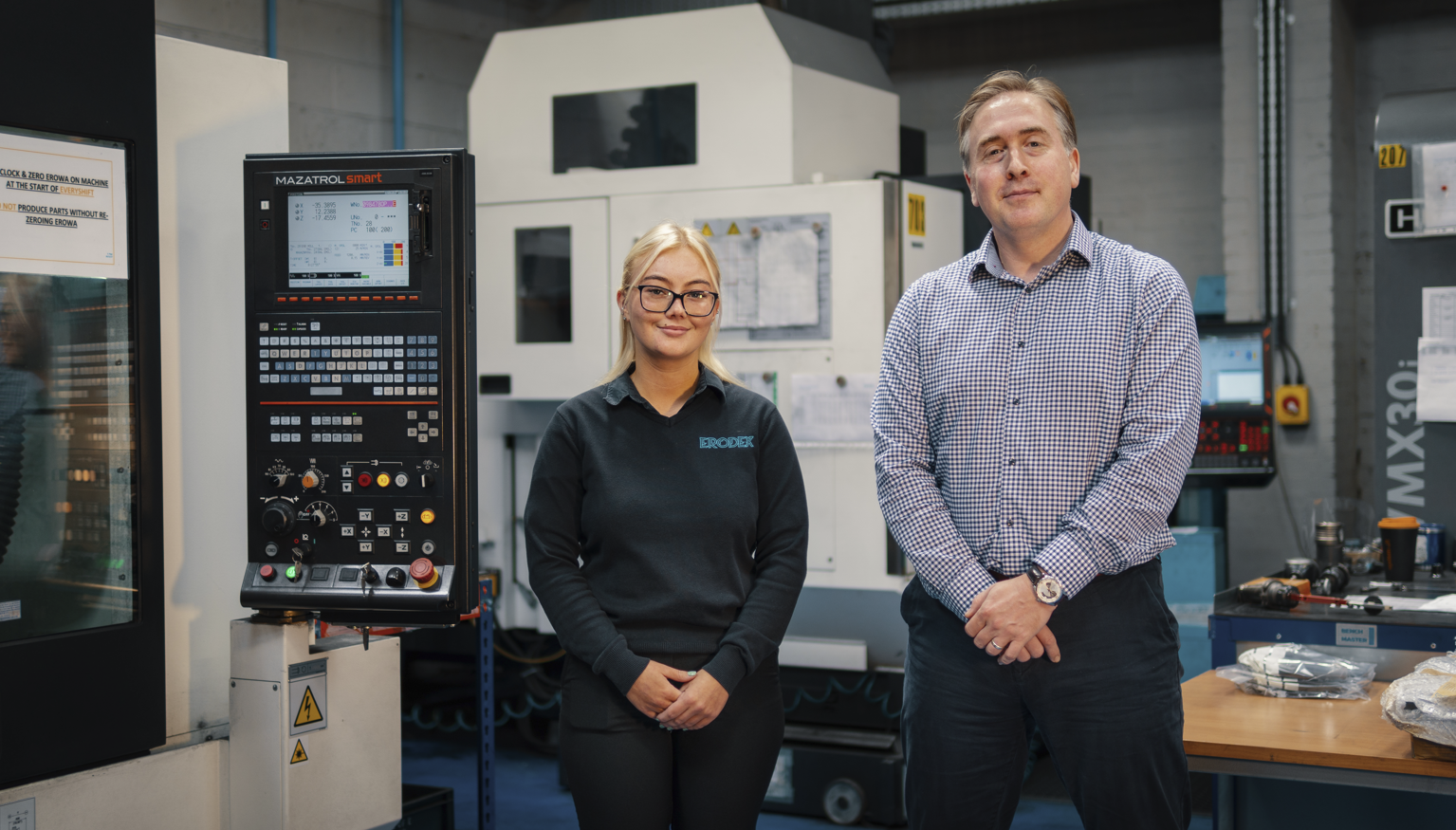
Pre-pandemic investment by Erodex in a continuous improvement programme has provided it with the increased efficiencies and reduced cost per part that aerospace industry now needs for recovery.
Such is the success of the programme that it has not only ensured the company is better positioned to weather the current storm but has also created new business opportunities thanks to more competitive processes and the implementation of advanced technology.
James Kirk, Director of Operations at Erodex UK, a supplier of EDM graphite, graphite machining and tooling to the aerospace market, joined the company in 2019 to spearhead the CI drive.
“We are in an environment now in aerospace where cost per part is becoming even more critical than it was two years ago” says Kirk.
“More than ever, we are required to find more efficient ways of producing and must therefore embrace a strategic commitment to improvement and change.
This is far easier to do when you are doing it in a business that is not performing. It is much more difficult to come into a business like Erodex, a market leader that was profitable and had been growing year on year and say ‘we need to improve’”.
However, that is what Kirk, working alongside fellow directors and owners Steve, Ian and John Rolinson, set about doing at its Graphite Machining Facility in Wednesbury, West Midlands.
“Initially we set about understanding what the true performance of the facility was. We identified potential to improve delivery adherence and then needed to understand what the drivers were behind that; was it down to performance, capacity, efficiencies, or a combination of these?
“It became quite clear that there was scope to improve workflow and machining efficiencies” continues Kirk.
Focusing on the priority areas of improving the efficiency, aesthetics and workflow of the shop floor, a CI road map was agreed between the Directors that also gave Kirk a wide scope on investment moving forward.
Basic but quick wins closed out in the first year included improving the layout of the factory, de-cluttering and implementing cellular environments for grinding and machining. This created a far more lean and efficient production environment that complimented other fundamental improvements such as white boards and daily team meetings.
Kirk adds: “After a period of evaluation, we focused on encouraging our people towards embracing change and wanting to be part of the journey, ensuring that we had the right mindset and philosophy of the people on site.
“We tried to show them that by changing, they will make it both easier for themselves and better for the business. For example, by raising the level of inspection, improving the workflow so material is always ready in advance for the machinist to start their next job, ensuring tooling has been checked. This kind of method in manufacture is very basic, but once bought into these basic principles, it is easier for individuals to go with the greater leaps of faith”.
Driving down costs in existing programs through a ‘one operator, three machines’ philosophy of multitasking and re-assigning roles and responsibilities laid the foundation for investment in new machinery and exploring new processes.
“We’re at the more technical end of the road map now; drilling down part by part into high value runners and repeaters. If you look at what we have done on one of our highest value lines, we have driven in some significant savings into our products. We are now developing new techniques and are now looking at robotics for high volume products”, Kirk continues.
“We’ve started asking new questions, such as ‘how can we take that part that we’ve machined in a 3-axis orientation and machine it in a 5-axis orientation - and what does that do to our cost per part’?”
“Investing in and maximising the capability of different machinery such as 5-axis also opens us up to new products and industries going forward. As a business, I think we’ve began to acknowledge that whilst we are industry leaders at what we do, we can push ourselves to grow into new areas as well and there are aspects of electrode manufacture in Aerospace that we’ve not been able to do for one reason or another in the past, mainly technological reasons”.
The company believes the £1.75m programme of expansion will ensure that it is best placed to capitalise on the expected economic upturn throughout 2021 and beyond.
Investment in new machinery has seen capacity at the site increase by 40% and has enabled the company to secure a contract for a part that they were previously ‘not competitive on’ within the first two weeks of having the new machine on site.
This is combined with investment in a growing team that are bought into the vision of where Kirk and the Erodex Directors are taking the business.
“We’ve got a team that are really bought in to what we do. We’re investing in our people, progressing young talent within the business and ultimately for me, you get a more proactive response if you have a more dynamic mix of talent within your workforce.
“It is just a case of constantly pushing forward” concludes Kirk.
Photo: James Kirk with Ellie Emery